THE ULTIMATE SIEM REAP ITINERARY & GUIDE
- aforeigner.abroad
- Jun 7, 2020
- 13 min read
Updated: Jun 8, 2020

Disclaimer: Thank you to Templation for hosting us as your guests. The thoughts and opinions expressed here are entirely our own.
Traveling to Siem Reap is the perfect getaway for those pursuing unprecedented culture, historic charm and indisputable beauty. Over a million tourists a year find themselves here to get a first hand glimpse at this ancient civilization built over 1,200 years ago. Siem Reap's history dates all the way back to 802 AD but in recent years has reinvented itself as a bustling hub for a modernized Cambodia.
Siem Reap has grown in worldwide notoriety as a must-see highlight for those visiting Southeast Asia. This vibrant city is enriched by a multifaceted array of historical temples and religious sites, sprinkled with French cultural influences and a complex society founded on centuries old customs and traditions.
Due to the wide assortment of attractions and activities found here, Siem Reap consistently ranks as one of the top ten “Best Destinations” to visit by entities like Travel+Leisure, Wanderlust Magazine and of course, TripAdvisor. Once you’ve been, it’s all too easy to see why.
With this 3 Day Travel Guide & Itinerary to Siem Reap, you’ll be able to maneuver this city like a pro - obtaining a newfound understanding of the architectural wonders that reside here, while embracing the sights and sounds that once engulfed this ancient city; sure to satisfy your every need for an unforgettable trip. So let’s get to it, and get you prepped for a once in a lifetime Cambodian adventure!
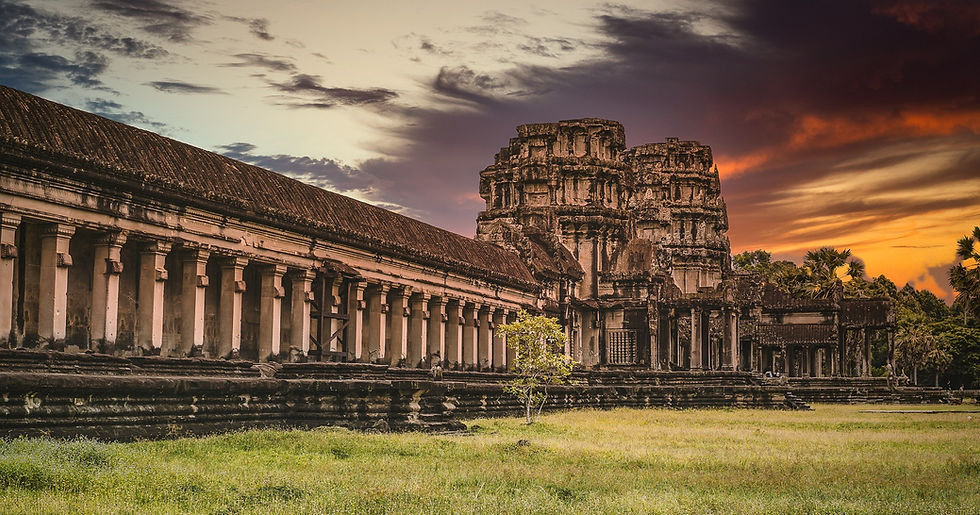
FIRST THINGS FIRST - WHERE TO STAY:
Siem Reap is a city that has it all, from five star resorts exuding extravagance to homely hostels, budget friendly restaurants bordering fanciful fine dining - boosted by a thriving cultural scene and an energetic nightlife, people constantly find themselves flocking to this city each year.
We too were intoxicated by the allure of Siem Reap and wanted to ensure our lodging enhanced the experience. We found all of the above with Templation. This luxury resort is a true oasis at the gates of Angkor Wat, with many temples just a stone's throw away - guests obtain easy access to all the historical must-see sites in addition to the Cambodian countryside. This resort embodies a modernized tropical focus with palm tree lined gardens, a swanky swimming pool ,and pristine rooms filled with an abundance of natural light. A stay at Templation will whisk you into a lavish world of serenity and complete relaxation.
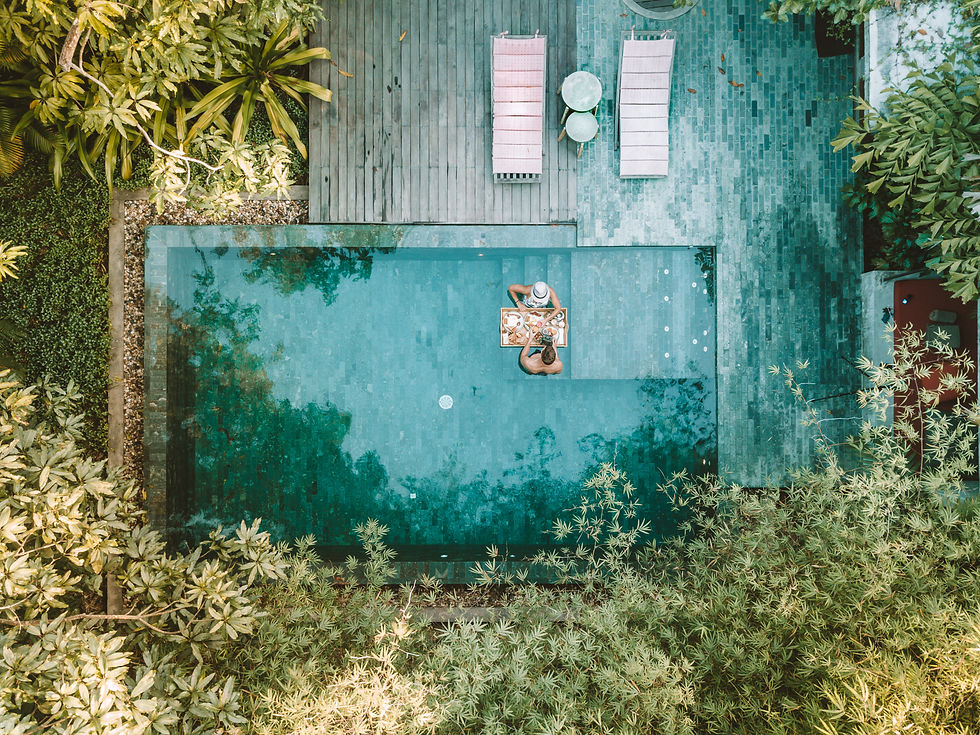
If you still aren’t sold - get a first hand look at our experience staying at this exquisite oasis at the gates of Angkor, it won’t disappoint.
Now that you have lodging figured out - let’s get to the good stuff!
DAY 1 - ANGKOR GRAND CIRCUIT
This day is strictly focused on exploring the Angkor Archeological Park (also known as Angkor Wat). Now you may be wondering what the heck that even is? Angkor Wat is a 400 acre temple complex nestled within Siem Reap containing over 50 temples, including the largest, most famous temple which the complex is named after - “Angkor Wat.”
To give you some brief historical insight, the word Angkor in the Khmer language of Cambodia means “temple capitol city” so if you hadn’t already guessed, this particular area once stood as the capitol to the Khmer Empire - and the Angkor Archeological Park (the official name of the temple complex) was the 400 acre area of temples built for the capitol over 1,200 years ago. Due to the magnitude of temples to see and vast areas to explore we’ve split Angkor Wat into two parts - one day is dedicated to the Angkor Archeological Park “Grand Circuit Tour” (also known as the “Big Loop Scenic Route”) - while the next day is strictly focused on the “Small Circuit Tour” (also termed the “Small Loop Scenic Route”).
For now let’s focus on Day 1.

LET'S TALK TRANSPORTATION:
When visiting the Angkor Archeological Park there are usually five crucial ways to access the complex grounds: by bike, car, bus, scooter, or tuk tuk. We personally recommend hiring a tuk tuk for the day - there’s something invigorating about cruising in an open air vehicle as you drive from one temple to the next. Your place of lodging can easily coordinate this for you otherwise hit the streets to flag down one of the many drivers available and negotiate pricing from there. It’s that simple!
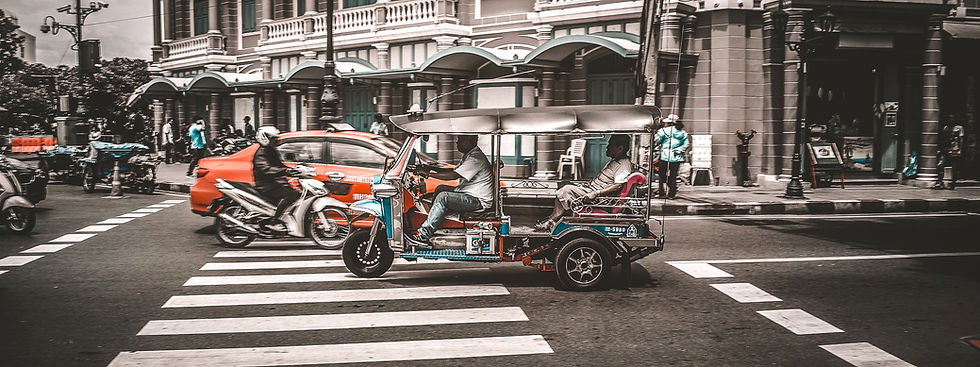
ANGKOR ARCHEOLOGICAL PARK PRICING:
Standardized pricing for tuk tuk transportation is below (Pro Tip: Pay your driver in cash):
Angkor Small Circuit Tour: $15
Angkor Grand Circuit Tour: $20
Angkor Grand Circuit Tour + Temples Located Outside the Grand Circuit: $25
Since Day 1 is solely dedicated to the Angkor Grand Circuit Tour - you’ll pay $20 in cash to your driver and be on your way!
HOW TO GET INTO ANGKOR ARCHEOLOGICAL PARK:
To gain access into the Angkor Archeological Park you will need a ticket, so have your tuk tuk driver first take you to the Angkor Wat Ticket Control Office to purchase. Get there early to avoid the mass crowds since lines can become overwhelming throughout the day - especially during peak season months (November - March). Prices for park admission are below:
1 Day Angkor Archeological Park Pass: $37 Per Person
3 Day Angkor Archeological Park Pass (Valid for 1 Week): $62 Per Person
1 Week Angkor Archeological Park Pass (Valid for 1 Month): $72 Per Person
Quick Tip: Buy your Angkor Wat Sunrise Ticket for Day 2 while at the ticketing office on Day 1. This will save you loads of time the following day - so that on the morning of Day 2, you can focus on getting an incredible seat to watch the sunrise vs. waiting in a ridiculously long line at the ticketing office and wasting precious time.
What to Purchase? We recommend buying the 3 Day Angkor Archeological Park Pass + Angkor Wat Sunrise Ticket (for Day 2) - this combo is perfect for the itinerary we have planned for you.

A QUICK GLANCE AT ANGKOR ARCHEOLOGICAL PARK HOURS:
Angkor Wat Temple & Srah Srang: 5:00am – 5:30pm (Open @ Sunrise)
Phnom Bakheng and Pre Rup Temples: 5:00am – 7:00pm (Open Sunrise to Sunset)
All Remaining Temples: 7:30am – 5:30pm
Since we are starting Day 1 with the Angkor Grand Circuit Tour - you’ll be hitting the temples on the outer perimeter of the complex grounds. The Angkor Small Circuit Tour covers less ground but takes you to the more notorious attractions that you’ll experience on Day 2.
For now let’s kickstart Day 1.
DAY 1 - ANGKOR GRAND CIRCUIT TOUR - SCHEDULE AT A GLANCE:
Preah Khan
Neak Pean
Ta Som
East Mabon
Pre Rup
Srah Srang (Typically part of the Small Circuit Tour but you can easily add)
STOP #1: PREAH KHAN
Preah Khan is one of the more memorable main attractions to the Grand Circuit Tour. It’s the largest flat temple city found in the Angkor Wat Complex that now sits in ruins. Built in the 12th century, Preah Khan was an intricate maze of vaulted corridors and carvings that stood as the epicentre to over 100,000 servants and officials who for hundreds of years called these stone walls home.
Opening Hours: 7:30am - 5:30pm

STOP #2: NEAK PEAN
East of Preah Khan is Neak Pean; an island temple constructed atop a reservoir that was originally created to help irrigate rice fields during the dry season. This particular structure includes an intriguing sandstone circular platform surrounded by four smaller bodies of water poised in a symmetrical fashion, that are said to have represented water, earth, wind and fire. Legend has it that these bodies of water transmitted healing powers - so many residents came here to rest, rejuvenate and relax in the healing serenity this temple provided.
Opening Hours: 7:30am - 5:30pm

STOP #3: TA SOM
Ta Som temple is most notorious for its bayon-style sophisticated design, standing as one of the most remarkable examples of intricate stonework found in Angkor Wat. Many find this temple to be a miniature version of Ta Prohm, as its walls have also been encroached by centuries old tree roots, seemingly trying to devour the temple whole. It’s a wonderful site to observe in person.
Opening Hours: 7:30am - 5:30pm
STOP #4: EAST MABON
The East Mabon temple formerly stood on a small island in the middle of the Eastern Baray and at the time, was only accessible by boat. This was once an important Angkor Wat reservoir that unfortunately dried up during the medieval times. Now, visitors must use their imaginations to envision the original majesty this place once had surrounded on all sides by water. Constructed as a pyramid of terraces with unbelievable examples of lintel carvings from the Pre Rup style created over 1,000 years ago - this place will leave you utterly speechless.
Opening Hours: 7:30am - 5:30pm
STOP #5: PRE RUP
Pre Rup is a 10th Century brick Hindu temple built upon a small mountain top. Pre Rup in the English language directly translates to “turn the body” and was once considered to be a funeral site and ancient crematorium. Apparently tradition has it that bodies were rotated at various points throughout the funeral service, hence the obscure name. This was one of our favorite temples by far due to its excellent condition and pristine location - it also serves as a great place to watch the sunrise or sunset if you have more than two days to explore the Angkor Wat grounds.
Opening Hours: 5:00am - 7:00pm
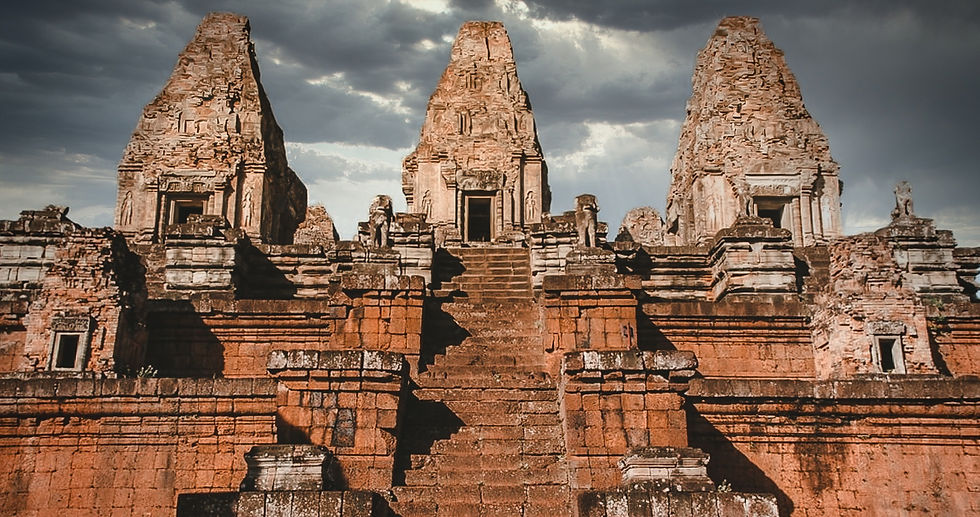
STOP #6: SRAH SRANG
Srah Srang is located at the apex of both the grand circuit and small circuit junctions.
This particular temple is quite simple with a cross shaped platform that leads visitors towards a soothing pond. Mythical monsters from centuries past are sculpted at various corners offering protection to those who seek it. And if you decide to do the Grand Circuit Tour counterclockwise, Srah Srang dually serves as a perfect sunrise location.
Opening Hours: 5:00am - 5:30pm

DAY 2 - ANGKOR SMALL CIRCUIT
Day two’s schedule focuses on the Angkor Small Circuit Tour which contains all of the iconic and well recognized monuments found in the park, so expect a jam packed day full of exploration and adventure.
DAY 2 - ANGKOR SMALL CIRCUIT TOUR - SCHEDULE AT A GLANCE:
Sunrise at Angkor Wat
Phnom Bakheng
Bayon Temple - (Built in “The Great Capital City” of Angkor Thom)
Baphuon Temple - (Built in “The Great Capital City” of Angkor Thom)
Terrace of the Elephants - (Built in “The Great Capital City” of Angkor Thom)
Thommanon and Chau Say Tevoda
Ta Keo
Ta Prohm
Banteay Kdei
STOP #1: AN UNFORGETTABLE ANGKOR SUNRISE EXPERIENCE
Witnessing an Angkor sunrise is a non-negotiable for anyone visiting Siem Reap.
It’s that good!
To make sure you have the best possible experience - have your tuk tuk driver pick you up at 4:30 am sharp (any later and you’ll be fighting off crowds for a good seat which is not fun). As mentioned earlier - you should have already purchased your Angkor Wat Sunrise Ticket on Day 1 from the ticketing office so you should be all set to access a sunrise at Angkor Wat to open Day 2.
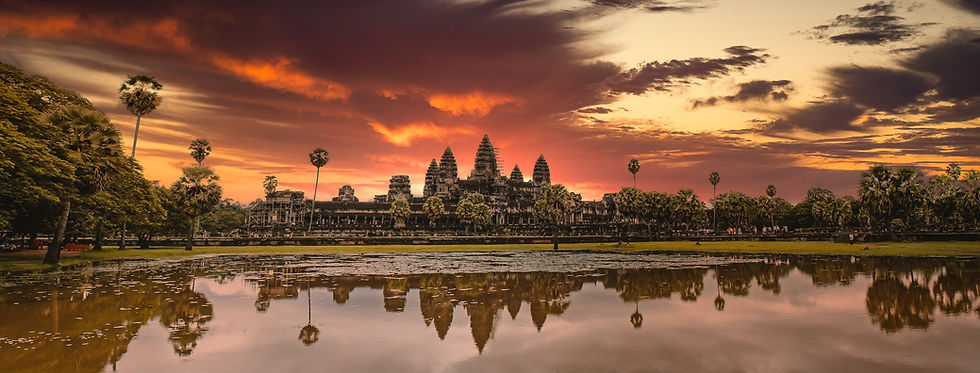
A QUICK GLANCE AT ANGKOR WAT SUNRISE HOURS:
Angkor Archeological Park Temple Gates: 5:00am (Open @ Sunrise)
Angkor Archeological Park Ticketing Office: 5:00am – 7:00pm (Open Sunrise to Sunset)
BEST SPOT TO WATCH AN ANGKOR SUNRISE:
It can be overwhelming knowing where to sit to maximize your experience but we found the perfect place just for you! Position yourself directly behind and on the edge of one of the two reflection ponds found in front of the main temple. This is where most people have captured that recognizable photo so many of us have seen printed on postcards and travel brochures amplifying the iconic beauty of an Angkor Wat sunrise in Siem Reap. Now’s your turn to capture the same!
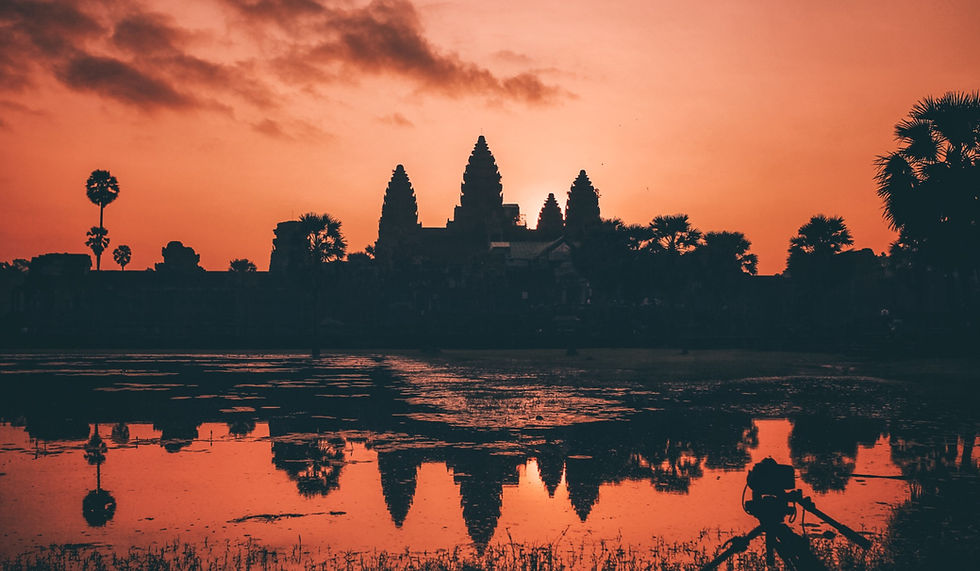
THE HISTORY BEHIND ANGKOR WAT:
Angkor Wat was originally built in the first half of the 12th century and took 30 years to complete, standing as the largest religious monument in the world. Formerly constructed as a Hindu temple this particular temple complex was slowly transformed into a Buddhist temple towards the end of the 12th century. Angkor Wat is a symmetrical masterpiece, and was declared a UNESCO World Heritage Site in 1992. This protected complex has become a popular tourist destination for persons all over the world that is guaranteed to take your breath away.
Opening Hours: 5:00am - 5:30pm
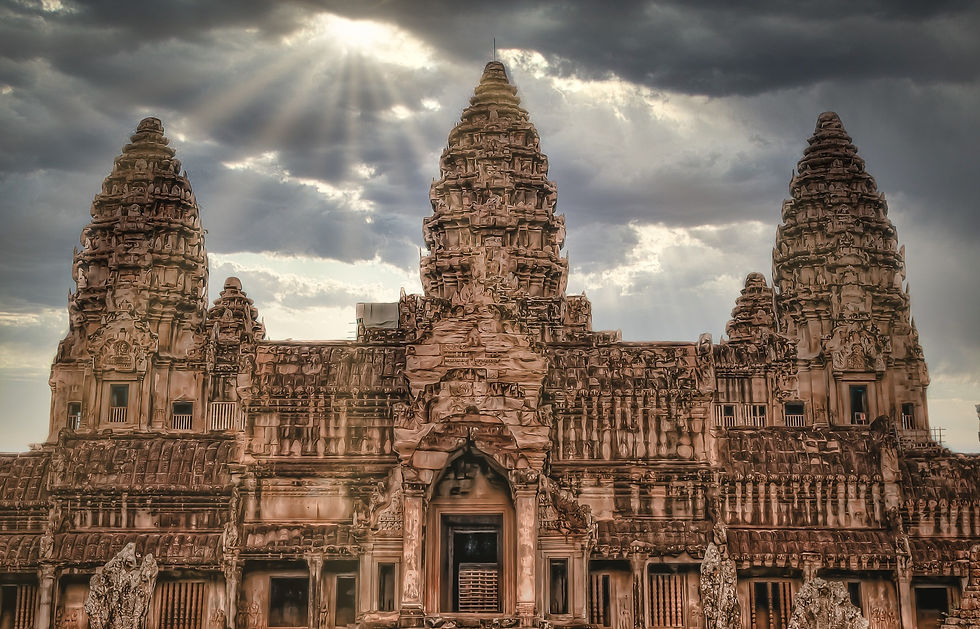
STOP #2: PHNOM BAKHENG
Phnom Bakheng is a temple mountain built in honor of the Hindu God Shiva and stands as one of the oldest temples found in the Angkor Archeological Park. Built at the end of the 9th century, Phnom Bakheng is a pyramid-like structure composed of 7 levels, symbolizing the sacred Mount Meru and the 7 Hindu heavens. This temple is also worth a second visit for sunset. Sitting high atop a hill, you’ll have unobstructed views of a tranquil Angkor Wat in the distance with its blossoming jungle below. If seeing a sunset sounds enticing to you, be sure to arrive 3 hours early - only 300 people are allowed in the temple at a time so if you don’t show up as specified - you’ll be waiting in a ridiculously long line with no guarantee to enter; the earlier you get there, the better.
Opening Hours: 5:00am - 7:00pm
STOP #3: BAYON TEMPLE
Nestled deep within Angkor Thom resides the 12th century Bayon temple. This hypnotizing shrine was built as a state temple to exalt Cambodia’s most celebrated King: Jayavarman VII, tributing to his prolific ideas, creative genius, and inflated ego. The most distinctive feature of this temple however, is the multitude of massive stone faces, decorated with over 11,000 figures of mythological, historical, and prosaic scenes that tower over the upper terrace and cluster around the central crest. It’s an astounding sight to see and a sculptural masterpiece.
Opening Hours: 7:30am - 5:30pm
STOP #4: BAPHUON TEMPLE
Baphuon Temple is a beautiful 11th century three-tiered temple mountain with an open terrace overlooking the Angkor Archeological Park. This particular temple design is quite unique - boasting a 225 meter elevated sandstone walkway that guides visitors to a main entrance where a set of steep stairs awaits, transporting patrons to an unobstructed upper level where one can peacefully observe lintel carvings and splendid scenery as far as the eye can see.
Opening Hours: 7:30am - 5:30pm
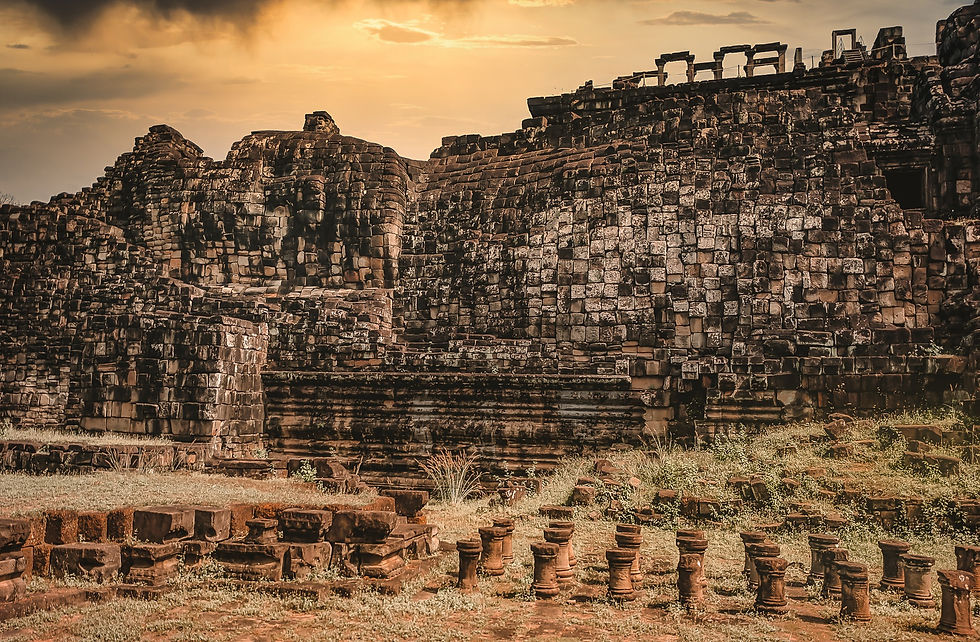
STOP #5: TERRACE OF THE ELEPHANTS
The Terrace of the Elephants was once part of the walled city of Angkor Thom. Built in the late 12th century, this 350 meter long retaining wall is embellished with hand carved-life size garudas, lions and of course, elephants. Originally constructed as a viewing platform for King Jayavarman VII; The Terrace of the Elephants was commonly used as a base for the king’s grand audience hall and various public ceremonies. Standing there now in silence - you can’t help but imagine what this must have felt like to experience a thousand years ago.
Opening Hours: 7:30am - 5:30pm

STOP #6: THOMMANON AND CHAU SAY TEVODA
Thommanon and Chau Say Tevoda are perfect examples of classical Angkor Wat styles from the early 12th century. These two charming temples are of modest proportions, similar in design ,and deeply intertwined. Embellished with well preserved carvings and ornate lintels of the two gods - Vishnu and Shiva, the craftsmanship is beyond remarkable. Both temples convey devatas (divine feminine figures) cloaked in Camobidan sampots (skirts), wearing flower embroidered crowns covered in traditional jewelry. These twin temples may be small in stature but their diminutive forms make them no less impressive.
Opening Hours: 7:30am - 5:30pm
STOP #7: TA KEO
Built during the second half of the 10th century, Ta Keo was one of the first temples to ever be solely erected out of sandstone. Ta Keo contains a moat, five 50 meter tall towers and a 22 meter pyramid. Under the rule of King Jayavarman V, the temple was dedicated to the Hindu deity Shiva and destined to be the new state temple of the Khmer Empire. Unfortunately, nature had other plans in mind. Legend has it that the temple was permanently abandoned when a bolt of lightning came down and struck one of the temple's main towers. The Khmer people saw this catastrophic event as an evil omen and stopped work immediately, leaving the temple deserted for centuries to come.
Opening Hours: 7:30am - 5:30pm
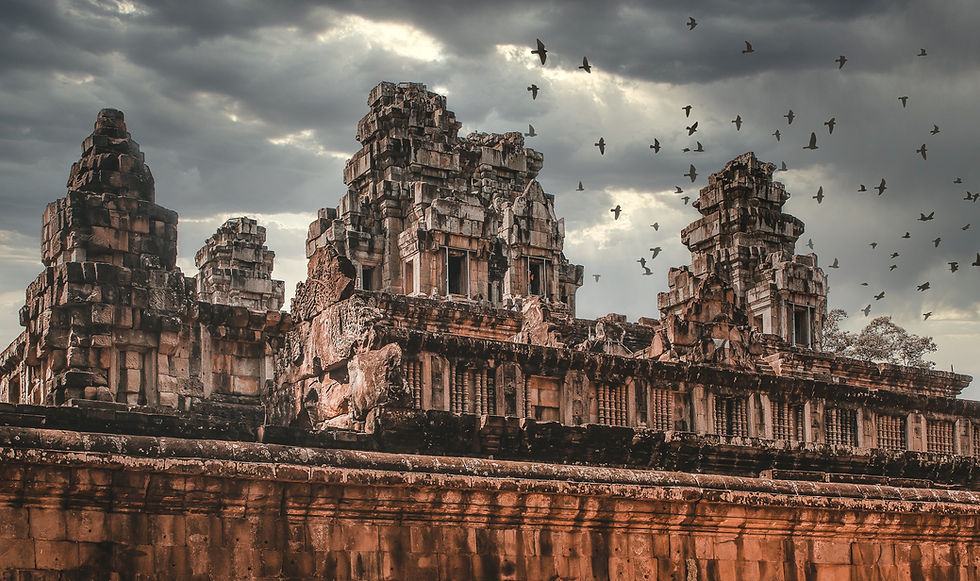
STOP #8: TA PROHM
Ta Prohm is the most photographed temple in all of Angkor Wat. Constructed in 1186 Ta Prohm served as a Mahayan Buddhist Monastery and University until the fall of the Khmer Empire in the 15th century. Soon after, Ta Prohm slowly began to decay as the Cambodian jungle took over, nearly swallowing the temple whole. Enormous tree roots have snaked their way through cracks, corridors, and crumbling stone walls in an attempt to pillage all in their path. This particular temple became increasingly famous after its big debut in the 2001 BlockBuster hit, “Tomb Raider” starring Angelina Jolie. Once that movie aired people couldn’t wait to see this mystical temple for themselves - and after experiencing it directly we must say it most definitely does not disappoint.
Opening Hours: 7:30am - 5:30pm

STOP #9: BANTEAY KDEI
Built in the 12th - 13th centuries, Banteay Kdei was commenced under the reign of King Jayavarman VII. The word Banteay Kdei precisely translates to “Citadel of Chambers” due to its intricate design of corridors and sandstone chambers. Originally constructed as a Buddhist monastery under Jayavarman VII, Banteay Kdei inevitably began to deteriorate due to poor construction techniques and quality of materials. This temple often gets overlooked as a result, but we found the tree engulfed ruins to be a perfect last stop to conclude our two day temple adventure.
Opening Hours: 7:30am - 5:30pm

DAY 3 - A VISIT TO THE FLOATING VILLAGES OF TONLE SAP
After two days of Angkor Wat exploration you may be asking yourself … what’s next?
By now you’ve seen the majority of iconic temples found in the Angkor Wat Complex, snagged a beer on Pub Street, and strolled the endless array of night markets selling local goods and trinkets… but what if you want a less touristy experience? We’ve got the perfect day planned for you at the floating villages of Tonle Sap to get an insider perspective on the real Cambodia.

FIRST THINGS FIRST - TUK TUK TRANSPORTATION:
Coordinate a tuk tuk ride with your place of lodging and ask to do the Kampong Khleang and Kampong Phluk Floating Village Tours. The distance is about 50 km (an hour’s ride) to the docks where you’ll board a boat to begin your tour. The entire experience should cost you $25 - $30 per person + tips for the tuk tuk, boat tour, and return trip. We recommend bringing additional cash to canoe the Tonle Sap mangrove forests, but we’ll get into that later. For now, let’s get you up to speed on what these floating villages are all about.
THE ULTIMATE FLOATING VILLAGE EXPERIENCE:
Gliding down the calm waters of Tonle Sap, you’ll peacefully pass through Kampong Khleang. This floating community contains three villages where 6,000 Cambodians reside, all of whom make their living from the fishing industry. Their stilted homes built within the floodplains of Tonle Sap create a cornucopia of color - all painted in an array of vibrant hues with flourishing potted plants accenting their wooden decks and windowsills.
Nearby villagers carry out their daily routines with uninterrupted fluidity. You can’t help but develop an appreciation for their tranquil way of life and dedication to hard work. This also happens to be one of the two floating villages where the residents directly benefit from ecotourism, so your visit not only enlightens your sense of awareness but also contributes to their economy.
Kampong Phluk is another floating village; equally amazing and accessible by boat.
Here the economy is dependent upon shrimp harvesting and ecotourism. This particular floating community is home to one of the largest mangrove forests in the world that many refer to as the “flooded forest” since it’s completely under water for parts of the year. The forest is approximately 6,000 hectares and contains various plant species, fish, and endangered animals. This is also where that extra cash comes in handy - for $5 you can take a canoe to the inner depths of the mangrove forest to make all of your Notebook cinematic dreams come true. The ride is about 30 minutes but well worth it. Words can’t even begin to describe the beauty you’ll experience and serves as the perfect grand finale to your unforgettable Cambodian trip.
We promised to provide you with an extraordinary 3 Day Travel Guide & Itinerary to Siem Reap - and we most definitely delivered! We hope you had fun navigating the historical wonders of Angkor Wat, floating the fishing villages of Tonle Sap, and checking off your long-held bucket list boxes. Life is all about living for moments you can’t put into words and you achieved three full days of just that, so be proud of what you’ve accomplished - we are!
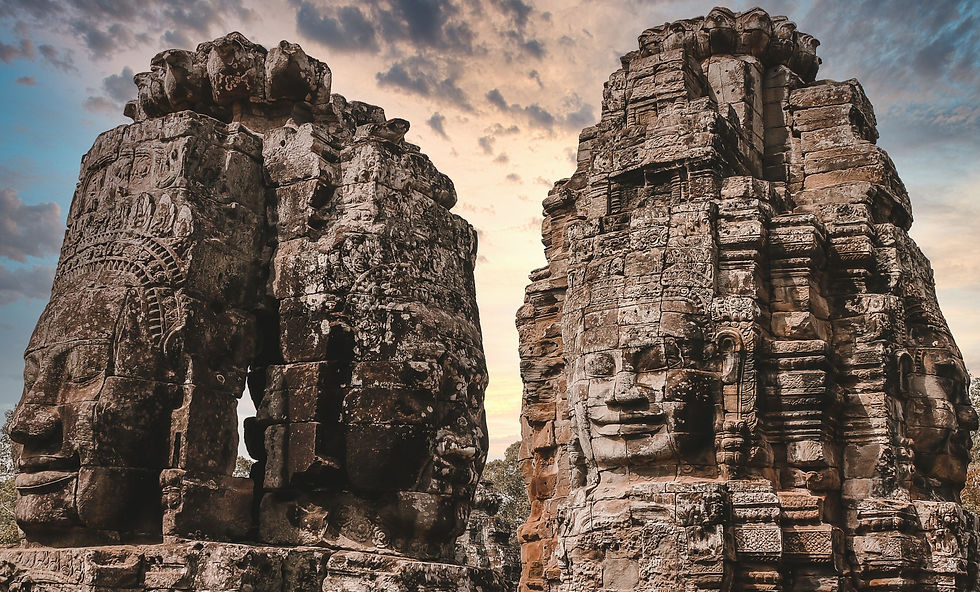












































































Comments